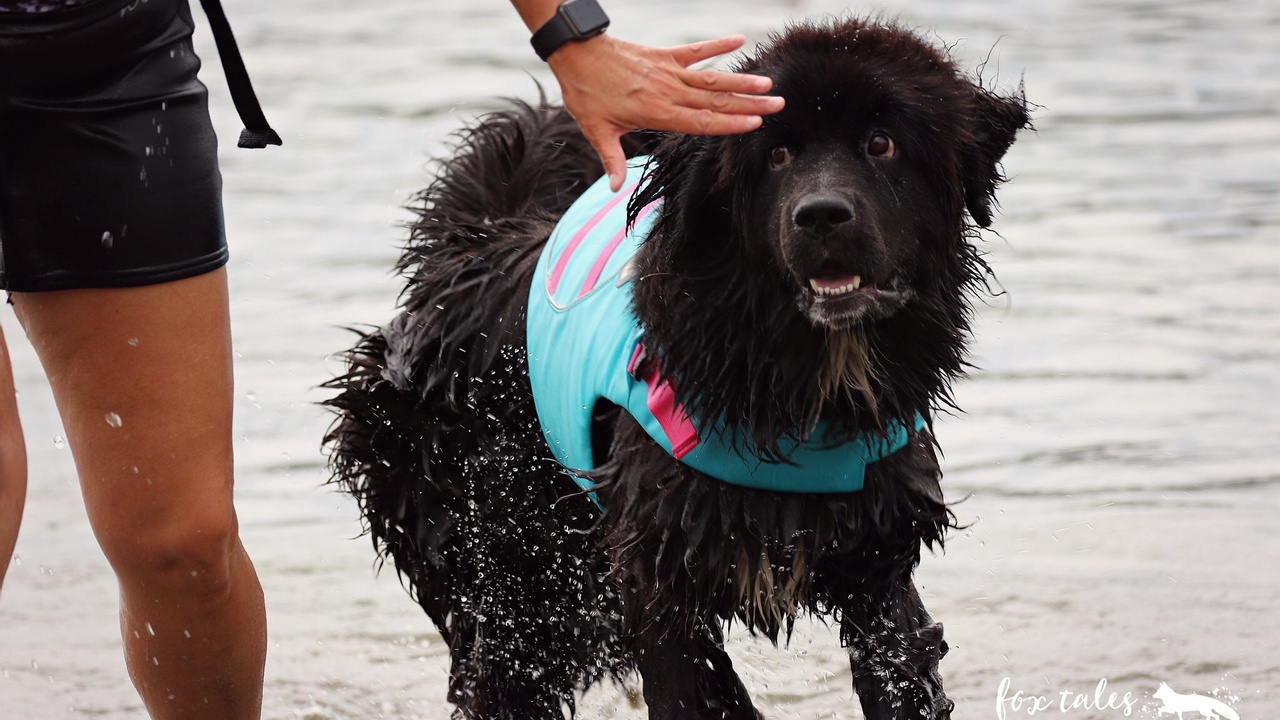Are we Exercising our Newfoundland Dogs Enough?

I would like to start a dialog in our community about what active exercise really is and if we are doing enough active exercise to achieve our summer goals?
One of the topics that comes across in my DMs and that I witness first hand; including my own Newfoundland, is that our dogs are not able to swim without life jackets. In a perfect world, we would not have to worry about this, but for Newfoundlands and Portuguese Water Dog water titles they must compete without a life jacket.
I have witnessed first hand that the dogs that are struggling know the behaviors and to be honest like the behaviors. In my opinion, I think we need to move beyond training competency as the issue and explore what other obstacles exist to achieve our goals.
I want to explore body conditioning as a potential issue that challenges us. I would also like to add that I personally help condition many, many dogs each week in my own canine swim business and I see many breeds that regularly compete in demanding sports.
The Newfoundland Dog Breed is the breed I see have the most issues swimming without a life jacket. Why are Newfoundlands seeing this more than other breeds?
Is it their bone density, size, temperament, or something else? If left to their own devices, Newfoundlands are not normally overly active dogs. We do not do a ton of active sports with them like agility or flyball. The smaller breeds are not only actively exercised, but their sports are active and they are training that sport several times a week. A smaller performance dog would do at least two conditioning sessions a week and two active training sessions a week. Also, many of the performance dogs I see are under the guidance of a canine physical therapist and do a weekly home program for strengthening.
I also think it is less glaring when our dogs are younger (lighter, less bone) and our distances for Junior Water Dog are 50 feet or less. We start seeing good dogs and handlers struggle when we are trying to pass these titles when they are older and go for our Senior and Excellent titles where distances are 75 feet and greater. This goal is not realistic without the dog being in excellent physical condition.
The question on the table is, are dogs in good enough physical condition to do the job we are asking them to do? We are asking them to work for about 20 minutes, with most of that as swim time.
U.S. Masters Swimming states that water creates 12 to 14 percent more resistance than air. I do not think we should be surprised that our dog’s butt and then body is sinking if we have not conditioned them to compensate for this increase in resistance. Are we conditioning their core and rear muscles to make up for this increase in resistance?
So now that I have you thinking….let’s talk about the things we can do so our dogs can handle an activity that is 12-14 percent harder than walking.
- Conditioning Time and Training Time are different activities. We cannot think of our training time in the water as conditioning time.
- When I onboard a new conditioning client for the pool, our goal is to work up to five minutes of continuous swimming. We gradually do this until we can reach the five minutes. I start out my clients with a 30 minute swim session. We divide that time into continuous retrieving, continuous swimming, and quick rests in between. I see these clients at least once a week, twice a week if they want to get their dog in shape faster. Anything less than once a week, you have to be doing similar activities on your own.
- Find a Rehabilitation Veterinarian or Canine Physical Therapist that works with performance dogs. Ask them for a program and exercises that will isolate muscles used for swimming. A dedicated home program where you do prescribed exercises twice a day, 4 to 5 times a week is just as good if not better than a hydro program.
- Hike or take your dog for a brisk 1.5 mile walk or 60 minutes once a day five to six times a week.
- Find a facility with an underwater treadmill, and take them once or twice a week.
I know some of the above recommendations sound absurd, but I perform about 40 appointments a week. I have spent months if not a year with these dogs. I know their routines, what they do, and how they perform. The dogs that show progress are doing the recommendations listed above.
Don’t just take my word for it….think about the dogs you see struggling and the dogs that are swimming without a life jacket well. Talk to the owners about what they are doing with their dogs on a daily or weekly basis. Do they just walk in the yard and have a lot of couch time? Do they take them on a walk every day? I spoke with a Newfoundland owner that has a dog that swims well without a life jacket. She routinely hikes her dog 20 miles a week and owns a pool.
I have increased my dog’s weekly underwater treadmill sessions and increased her home exercise program.
What will you do to increase your weekly activity? Let us know in the comments. I would love to hear from you!
Swimmingly Yours,
Erica
Your Dedicated Swim Coach
P.S. Join my free Facebook at https://www.facebook.com/groups/4pawsadrift/ where we talk about all things water.
P.S.S. Please feel free to share this with your friends.

